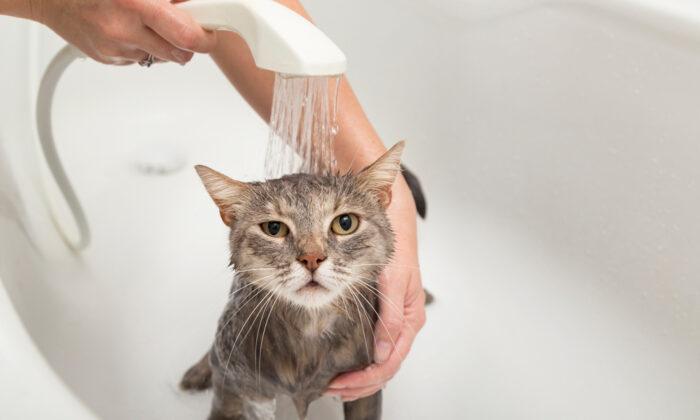After her bath, Jinx needs to see her veterinarian. The effects of smoke exposure may not appear until up to six days after the fire, and immediate veterinary care can prevent these problems.
A pet exposed to smoke in a burning home or other enclosed space often develops problems with the skin, eyes, respiratory tract, and nervous system. Eye problems include corneal ulcers and decreased tear production that may not be obvious without diagnostic testing.
Jinx also may have suffered thermal burns of her airways, and she may have inhaled particulate matter, carbon monoxide, cyanide gas, and other toxic gases.
If any of these occurred, her airways will swell, reducing the oxygen to all her organs and possibly causing lung collapse.
In addition, carbon monoxide decreases oxygen levels in the blood by binding to hemoglobin, displacing oxygen. The neurologic effects of carbon monoxide may not appear until days after smoke exposure.
Cyanide gas, a toxin produced when rubber, wool, plastic, and other synthetic materials burn, interferes with energy production within cells.
Fortunately, with immediate care, the outlook is good for pets like Jinx.
If you wish to thank your firefighters and help others in your community, consider donating a set of pet oxygen masks to your fire department. To learn more, visit PetOxygenMasks.org.
Addison’s disease is officially called hypoadrenocorticism because it reduces (“hypo-”) the production of hormones by the adrenal glands’ (“-adreno-”) cortex layer (“-corticism”). The adrenal glands are situated in the abdomen near (“ad-”) the kidneys (“-renal.”)
When levels of these adrenal hormones are low, dogs develop vague, intermittent clinical signs, such as lethargy, weakness, trembling, loss of appetite, diarrhea, or vomiting. Clinical signs sometimes are triggered by stressful events, such as when the dog is groomed or boarded, or even when unfamiliar guests visit the home.
Less frequently, the first clinical sign is collapse due to dehydration or a disturbance of the heart’s normal rhythm. Addisonian dogs may also have a history of doing well during steroid hormone therapy for another condition, such as allergies.
The disease is caused by immune destruction of the adrenal cortex. More than 80 percent of dogs diagnosed with Addison’s disease are 7 years or younger, and 70 percent are female. The disease is inherited in some breeds.
The breeds most often affected are the American cocker spaniel, bearded collie, Cairn terrier, great Dane, great Pyrenees, Labrador retriever, Leonberger, Nova Scotia duck tolling retriever, Pomeranian, Portuguese water dog, Rottweiler, soft-coated wheaten terrier, standard poodle, and West Highland white terrier.
Fortunately, lifetime hormone replacement therapy is very effective, so Bonnie should do well.





